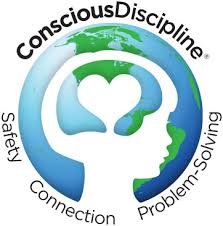A Child-First Research Driven Curriculum
Play-based and focused on the individual needs of children
Christ Lutheran Day School has created a curriculum that looks at each child’s individual needs and goals to help scaffold them to their fullest learning potential. The foundation of our program is based on the Creative Curriculum. We use this program as a framework to support the learning environment each teacher creates in the classroom. This includes creating interest areas around the room, and a consistent schedule that meets the needs of the children. The Texas Prekindergarten Guidelines are followed as well.
“Discipline isn’t something you do to children, it’s something you develop within them.”
-Dr. Becky Bailey
Conscious Discipline is specifically designed to teach the following:
Anger management
Helpfulness
Assertiveness
Impulse Control
Cooperation
Empathy
Problem-solving
Real-life conflict and challenging situations serve as character education curricula for the Conscious Discipline classroom. Conflict is viewed as a teaching opportunity, and adults are empowered to transform it into a valuable lesson. Character education is part of everyday life, not an activity that occurs separately.
Teaching Strategies Gold believes that all children deserve a nurturing, engaging, and high-quality learning environment designed to support their unique needs throughout the critical, formative years.
The Creative Curriculum builds children’s confidence, creativity, and critical thinking skills through hands-on, project-based investigations. Trusted for decades by early childhood educators, our curriculum:
respects and nurtures individual skill progression for the whole child
harnesses the power of play through studies that engage learners as young as 2
seamlessly connects families to their children’s learning
provides intentional support for every teacher every day
What is play-based learning?
Playful learning describes a learning context in which children learn content while playing freely (free play or self-directed play), with teacher guidance (guided play), or in a structured game. By harnessing children’s natural curiosity and their proclivities to experiment, explore, problem-solve, and stay engaged in meaningful activities—especially when doing so with others—teachers maximize learning while individualizing learning goals. Central to this concept is the idea that teachers act more as the Socratic “guide at the side” than a “sage on the stage” (e.g., King 1993, 30; Smith 1993, 35). Rather than view children as empty vessels receiving information, teachers see children as active explorers and discoverers who bring their prior knowledge into the learning experience and construct an understanding of, for example, words such as forecast and low pressure as they explore weather patterns and the science behind them. In other words, teachers support children as active learners.
Importantly, playful learning pedagogies naturally align with the characteristics that research in the science of learning suggests help humans learn. Playful learning leverages the power of active (minds-on), engaging (not distracting), meaningful, socially interactive, and iterative thinking and learning (Zosh et al. 2018) in powerful ways that lead to increased learning.
Free play lets children explore and express themselves—to be the captains of their own ship. While free play is important, if a teacher has a learning goal, guided play and games are the road to successful outcomes for children (see Weisberg, Hirsh-Pasek, & Golinkoff 2013 for a review). Playful learning in the form of guided play, in which the teacher builds in the learning as part of a fun context such as a weather report, keeps the child’s agency but adds an intentional component to the play that helps children learn more from the experience. In fact, when researchers compared children’s skill development during free play in comparison to guided play, they found that children learned more vocabulary (Toub et al. 2018) and spatial skills (Fisher et al. 2013) in guided play than in free play.









